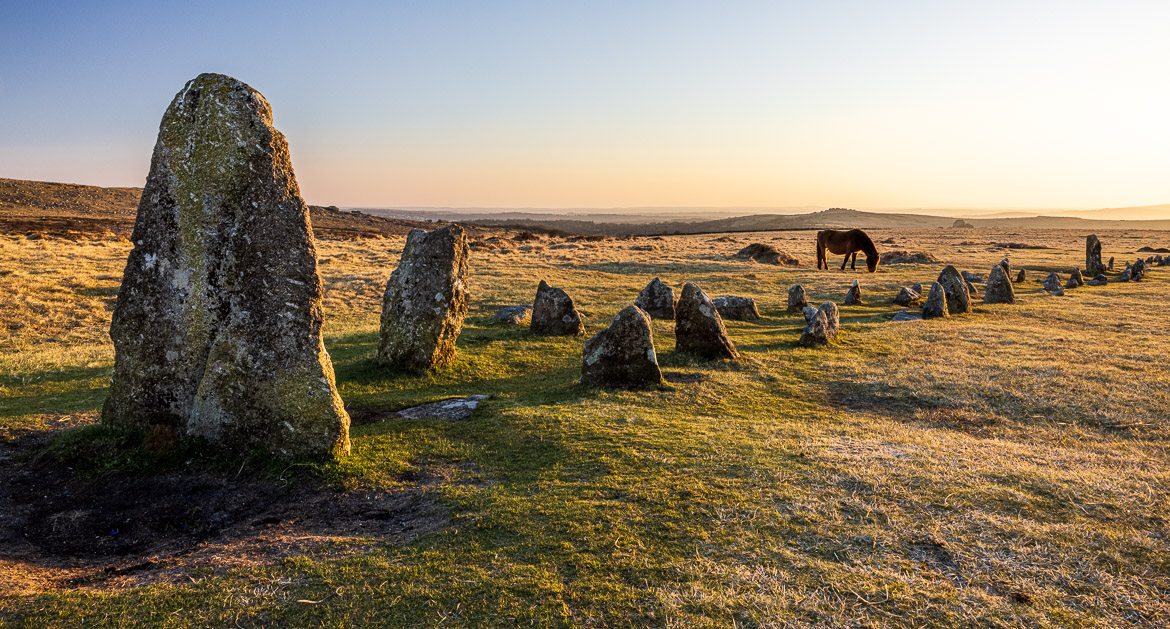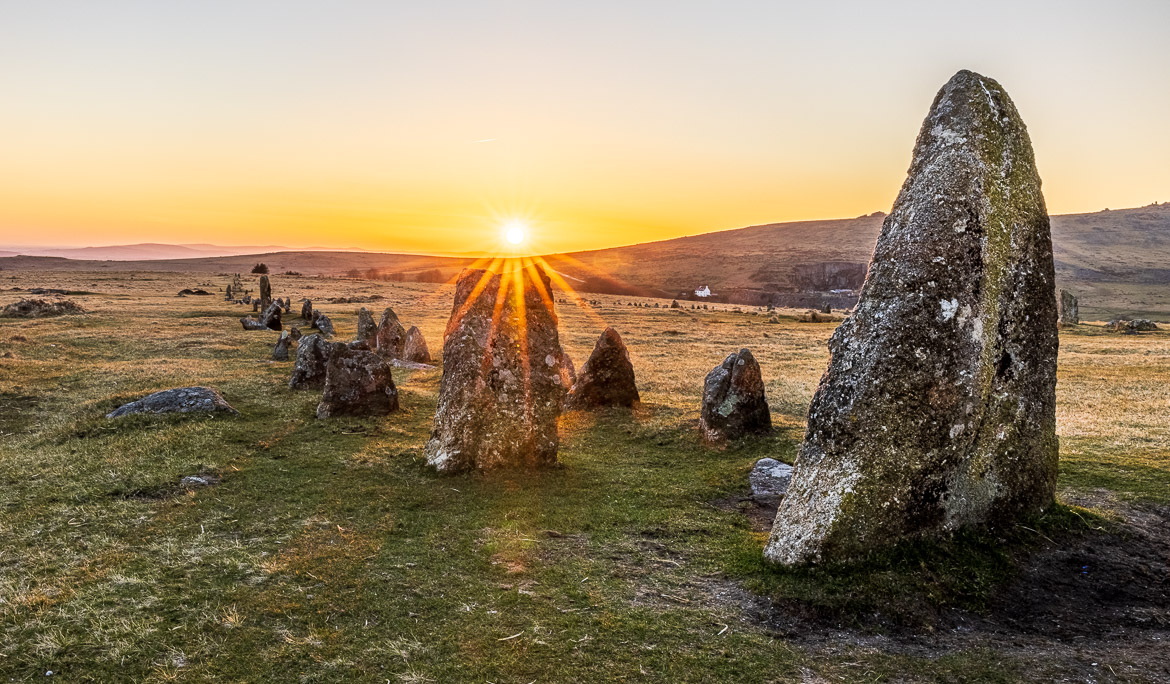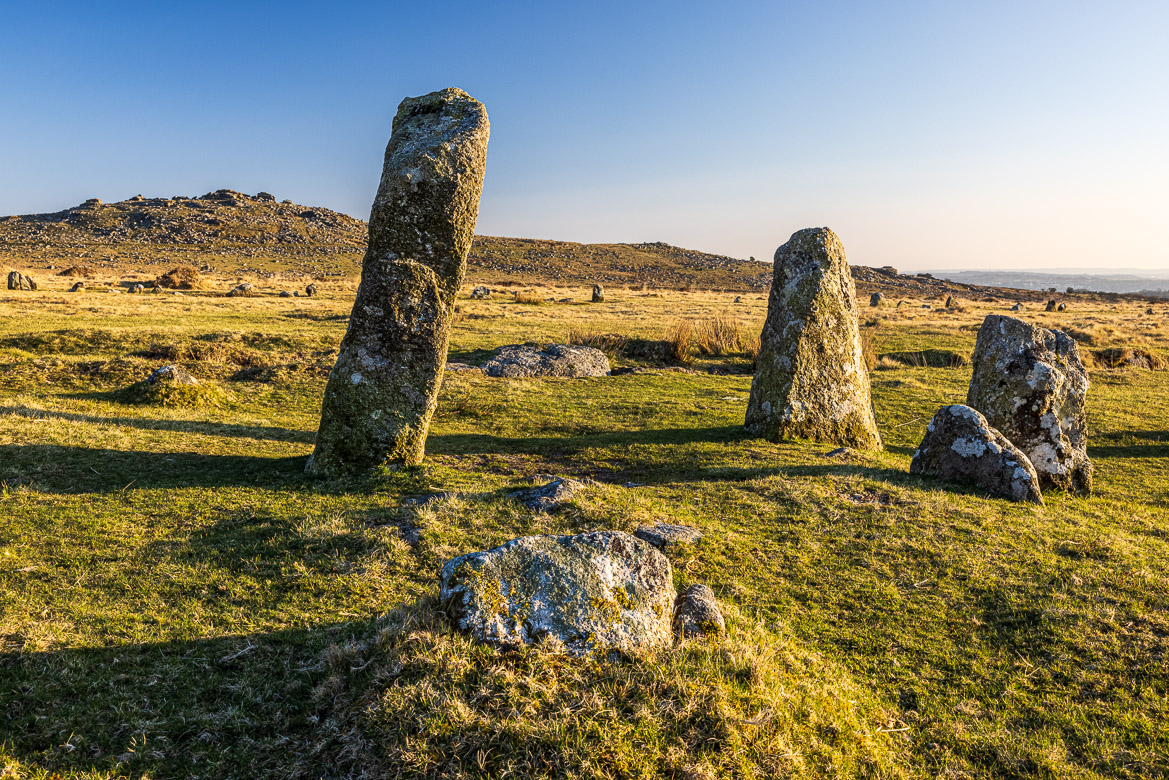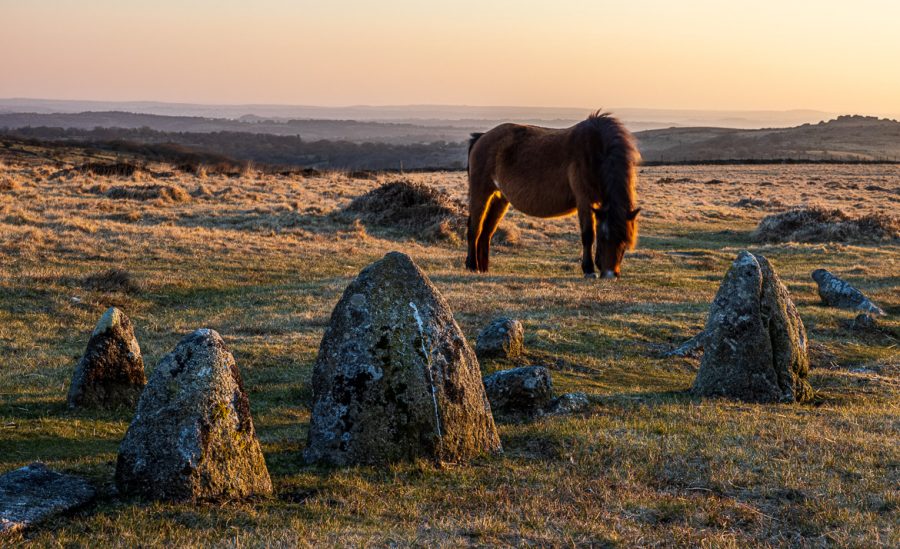
During the Neolithic (late Stone Age period, 4,000 – 2,000 BC) and Bronze Age (2,000 – 700 BC) periods a large number or ceremonial monuments were erected in Britain. Stone Henge is probably the most famous of them. Nowhere can you find as many of them as on Dartmoor. In an earlier post, I described the Scorhill Stone Circle, which was erected in the Bronze Age. Here I have some photos of the Merrivale Stone Rows.
The main feature is two double rows of stones that run one row around 250 metres and another around 180 metres long over slightly sloping moorland near the little hamlet of Merrivale. But there is also a smaller stone circle, several remains of hut circles showing that people lived nearby and several cairns and cists (burial sites). This makes it a full ceremonial complex, probably erected over a longer time period during late Neolithic or early Bronze Age time.
The north stone row looking south with the second stone row seen beyond the leat and King’s Tor in the background Part of the south stone row with a friendly Dartmoor Pony keeping me company
The furthest away lying stone row (the southern row; I approached from the north) is the most impressive and best preserved of all the features. At one end (the eastern) is a triangular blocking stone and then two parallel rows run around 250 metres and having a couple of hundred stones on either side of the path it created. The rows are terminated by two larger stones. In the middle of the path the rows are interrupted by a small cairn circle, but they continue on the other side. It is unclear if the cairn circle was erected at the same time as the stone rows or earlier or later.
We don’t know the purpose of the stone rows, like we don’t know why the stone circles were erected. It has been shown that the sun sets at equinox over one of the dominating stones, but it is a very unpractical and unnecessarily large complex for having an astronomical purpose. And the path between the stone rows is too narrow to have had a procession going through it. It is generally assumed that it had a religious and ceremonial significance, further supported by the findings of several burial cairns on the site. But due to the lack of documentation, we don’t know anything of Neolithic or Bronze Men’s beliefs, and we can only speculate of the ceremonial purpose that this site filled for the societies at that time.



